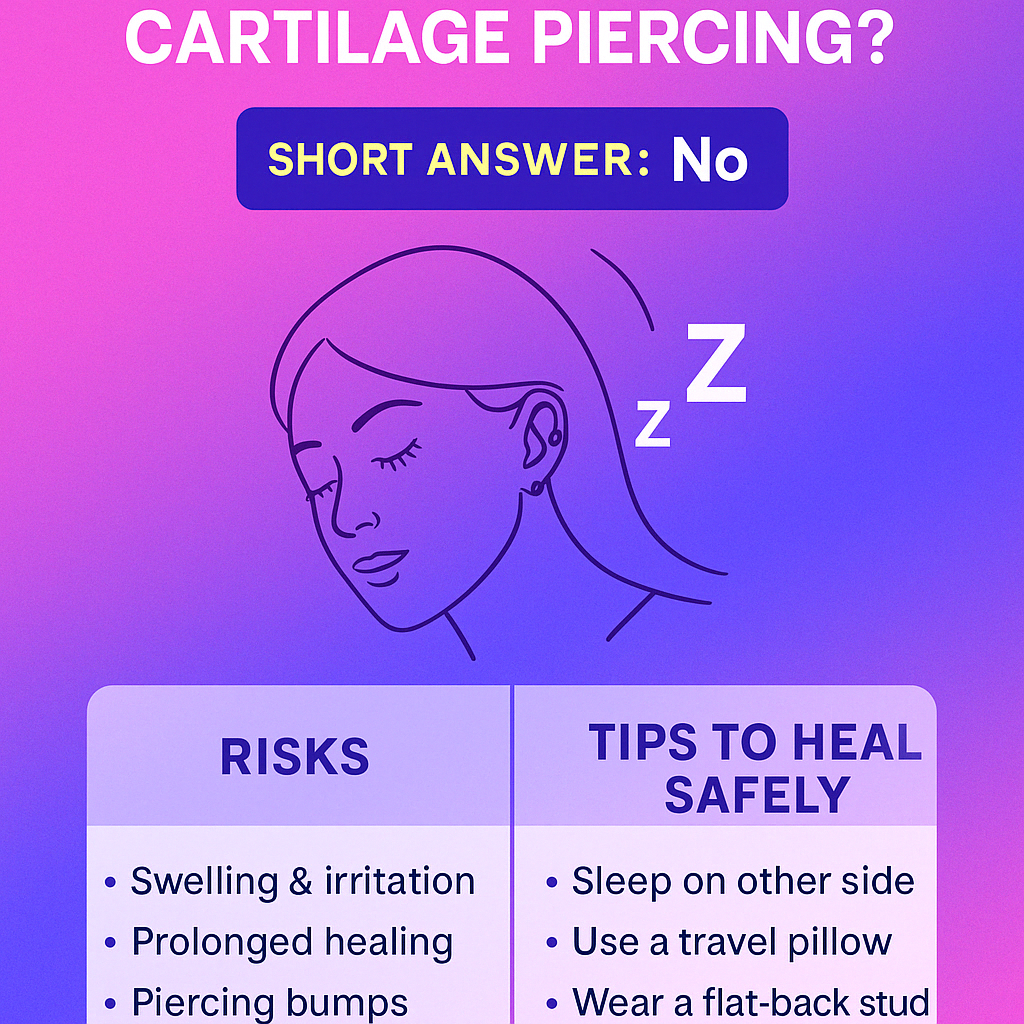
Can I Sleep on My Cartilage Piercing? Tips to Heal Safely
|
|
Temps de lecture 2 min
|
|
Temps de lecture 2 min
Got a new cartilage piercing and wondering if it’s safe to sleep on it? Whether it’s a helix, conch, daith or tragus — the short answer is:
No, you shouldn’t sleep on a new cartilage piercing — and here’s why.
In this guide, we’ll break down:
What happens if you sleep on it too soon
How long to avoid pressure
Tips for sleeping comfortably
The best jewellery to reduce irritation
No — at least not during the healing phase. Sleeping on your new piercing can:
Cause swelling and irritation
Shift or angle the jewellery incorrectly
Trigger cartilage bumps or keloids
Prolong healing (sometimes by months)
Even slight pressure night after night can damage the piercing channel — especially in harder cartilage areas.
| Piercing Type | Healing Time (Average) | When It’s Safer to Sleep On |
|---|---|---|
| Helix | 6–9 months | After 3–4 months, with caution |
| Conch | 6–12 months | After 4+ months, if swelling-free |
| Tragus | 3–6 months | After 2–3 months minimum |
| Daith | 6–9 months | After 3–4 months |
Note: Healing varies by body. If it’s still sore or red, don’t sleep on it yet.
A donut-shaped travel pillow or dedicated piercing pillow allows your ear to rest inside the hole — pressure-free.
It sounds obvious, but it works. If you're prone to flipping, try hugging a pillow or placing a soft object behind your back to stay put.
Bacteria from pillowcases or unwashed hair can trigger infections.
Change pillowcases every 2–3 days and tie back long hair.
Twisting, touching, or over-cleaning before bed can irritate the area. A simple saline spray routine is best.
You might experience:
Increased swelling
Sharp or pulsing pain in the morning
Jewellery indenting the skin
Crooked healing (jewellery gets pushed)
Red bumps, irritation or scarring
Worst-case? You’ll end up with a long-lasting cartilage bump that’s hard to get rid of — or the piercing may reject altogether.
While healing, your jewellery matters. We recommend:
Smoother backs = less pressure on the ear
Great for sleeping (once safe to do so)
Won’t dig in like ball-back studs
Lightweight and hypoallergenic
Won’t corrode or react with skin
Reduces irritation and swelling
Avoid large or dangly pieces
Choose flush-fit studs or small barbells
👉 [Shop Flat-Back Titanium Labrets]
👉 [Browse Cartilage-Safe Jewellery]
✅ Sleep on opposite side
✅ Use sterile saline spray twice daily
✅ Avoid over-cleaning or twisting
✅ Keep bedding and hair clean
✅ Stick to implant-grade titanium
✅ Never change jewellery too early
Sleeping with a healing cartilage piercing is tricky — but totally manageable with the right habits. A few weeks of careful sleeping can prevent months of irritation or scarring.
Camden Body Jewellery offers titanium cartilage studs and flat-back labrets made to support healthy healing and long-term comfort.
Choose labrets and cartilage studs made from ASTM F-136 titanium for your next step in healing.